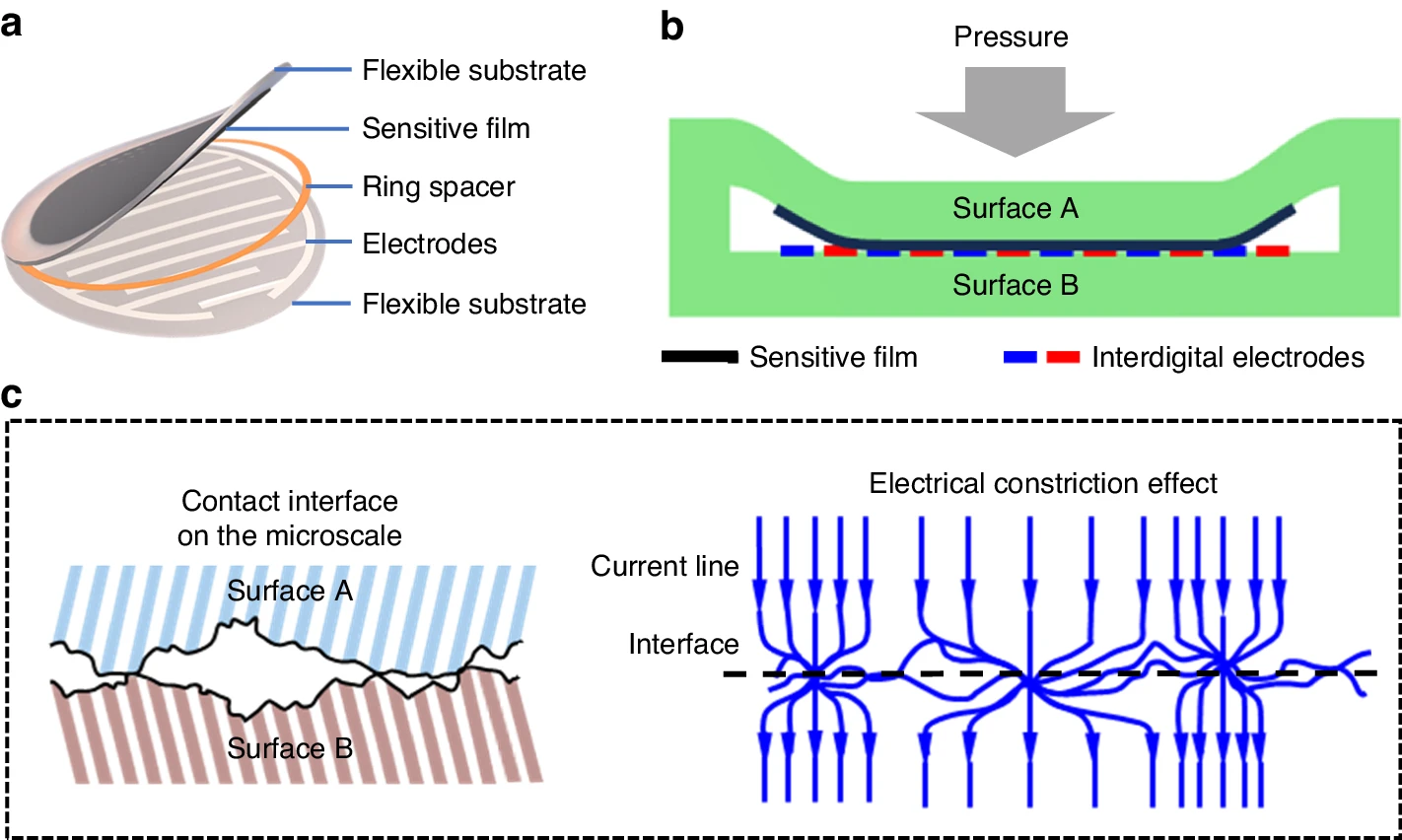新闻动态

- 地址: 江苏省苏州市苏州工业园区若水路398号
- 邮箱: tzhang2009@sinano.ac.cn
- 电话: 86-512-62872706
- 传真: 0512-62603079
- 网址: http://nanosensor.sinano.ac.cn

祝贺课题组在职博士研究生熊作平研究论文"Rational Design of a Laminate-Structured Flexible Sensor for Human Dynamic Plantar Pressure Monitoring"发表于Microsystems & Nanoengineering
Abstract:
Flexible sensors are essential components in emerging fields such as epidermal electronics, biomedicine, and human-computer interactions, and creating high-performance sensors through simple structural design for practical applications is increasingly needed. Presently, challenges still exist in establishing efficient models of flexible piezoresistive pressure sensors to predict the design required for achieving target performance. This work establishes a theoretical model of a flexible pressure sensor with a simple laminated and enclosed structure. In the modeling, the electrical constriction effect is innovatively introduced to explain the sensitization mechanism of the laminated structure to a broad range of pressures and to predict the sensor performance. The experimental results confirmed the effectiveness of the theoretical model. The sensor exhibited excellent stability for up to three million cycles and superior durability when exposed to salt solution owing to its simple laminated and enclosed structural design. Finally, a wearable sensing system for real-time collection and analysis of plantar pressure is constructed for exercise and rehabilitation monitoring applications. This work aims to provide theoretical guidance for the rapid design and construction of flexible pressure sensors with target performance for practical applications.

URL: https://www.nature.com/articles/s41378-024-00717-1




